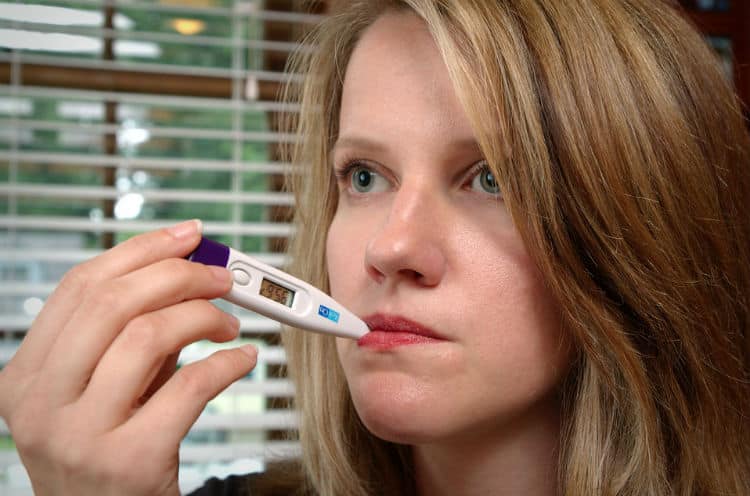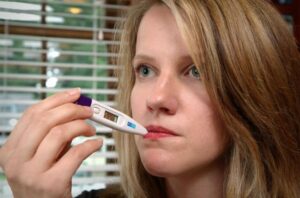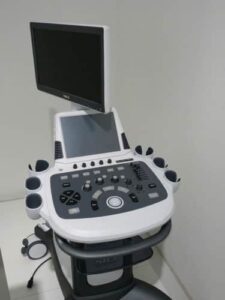Did you read the previous part, Infertility and Women?
Article updated on June 1, 2023.
Preconception Exam
First, it is essential that your family doctor or gynecologist has you fill out a questionnaire about health factors associated with risks that can influence conception. If you don’t have a doctor, you can go see a health professional in a fertility clinic without being a referral.
A full physical exam will also be completed, including a gynecological exam (pap test or cytology) with basic tests for sexually transmitted diseases and to detect anomalies in your reproductive system structures.
If necessary, your family doctor can refer you to a gynecologist, endocrinologist or a doctor specialising in fertility. For every appointment, make sure you bring your medical file, which includes all your recent tests to avoid having to retake them. You should also bring a list of medications you are taking.
Menstrual Cycle
Is your cycle 25 days or 35 days?
To calculate your menstrual cycle, you have to start from your first day of menstruation to the last day before your next period. Menstrual cycles can vary from 21-35 days, with an average of between 28-30 days.
Each woman has her own cycle, and to understand it, you should calculate it over several months. Note the exact pace of the period, length of menstruation, and bleeding characteristics systematically.
It is also good to know that a woman may bleed for different reasons during her cycle:
- presence of fibroid,
- whether or not she is taking contraception
- if she is taking hormones or not,
- an underlying problem such as a coagulation disorder, polycystic ovary or thyroid dysfunction,
- the use of medication (possible side effects).
If the woman doesn’t menstruate for several months, this provides professionals with indicators about their ovulatory function, which helps them consider different options for solving the problem. This is why it is strongly suggested that a woman who only menstruates a couple of times a year consult early on, as her chances of conceiving are very low given her atypical cycle.
Because we can’t foresee in advance the exact time you will ovulate during a cycle, professionals talk about the fertilisation or ovulation period to determine the best time to create life.
Basal Body Temperature
Basal body temperature is directly associated with the normal hormonal process that takes place during the preovulatory, ovulatory and post-ovulation periods. Without going into all the details about the different hormones that can impact a cycle, each one has an individual role that contributes to not only ovulation but the transportation of the egg, nesting in the uterus and then the embryo’s development.
More specifically, we know that for basal body temperature during the cycle, just before ovulation your temperature will slightly rise, which can indicate to the couple a more precise time of ovulation and when they have the best chance of conceiving.
To spot this slight increase, the woman has to take her temperature orally in the morning, at rest before getting up. She should note the results on a graph designed for this purpose to see her temperature fluctuations over time. If the temperature increases by 0.3-0.6ᵒC in a sustained way, she is ovulating.
But if there are no changes in temperature over a more extended period, the cycles may not be leading to ovulation (anovulatory cycle).
If the temperature change arrives too early in the cycle, your hormonal secretions are disorganised.
These observations are essential to evaluate your situation, as the treatment options that you will be provided later will be directly associated with the problems uncovered.
Hormonal Exam
Many hormones can influence fertility in different ways. Two specific hormones, progesterone and estrogen (estradiol) play an essential role for reproduction. This is why when you have tests, it’s good to check to see if their concentration in the woman’s blood is sufficient. Additionally, taking blood tests at different times during the cycle period (before, during and after ovulation) can inform the doctor about hormonal fluctuations, which may explain why you are having difficulty becoming pregnant.
The hormones FSH, LH and TSH, from the thyroid gland, and prolactin, which acts during lactogenesis, are hormones that can have an impact on female reproduction.
Don’t be surprised if your family doctor, gynecologist or specialist requests a general blood analysis including the calculation of these hormones. For a woman’s physiology, we know that a pregnant woman’s iodine needs increase, and there may be deficiencies noted during pregnancy, even for a healthy woman without specific symptoms before pregnancy. The hormonal situation needs to be stabilised and controlled to minimise risks for the pregnancy, for example, thyroid gland insufficiency (hypothyroidism) which can lead to miscarriage, anemia, hypertension, placental abruption, pre-term labour, and also impacts on the baby (neonatal complications such as low weight, premature birth, respiratory distress. Still regarding the thyroid gland, hypersecretion (hyperthyroidism) has effects on the mother’s health, the pregnancy and the baby, which should always be considered.
Pelvic Ultrasound
A pelvic ultrasound may be taken on the woman’s stomach to visualise the structures that make up her reproductive system to discover if there are any anomalies. With this exam, you could see if she had polycystic ovaries, which are causing hormonal problems which indirectly affect fertility.
Transvaginal Ultrasound
By using the natural access point via the vagina, the doctor can introduce an ultrasound probe to visualise the approximate volume of the ovaries and examine the follicles that contain the eggs to evaluate their size and number.
This exam allows the doctor to determine the number of eggs in the ovary and helps them monitor the evolution and maturation of the follicle after treatments to stimulate the ovulatory process. The woman may have a small, average or large egg reserve.
Hysterosalpingography (HSG) or Sonohysterography
Even if some tests are more invasive, they are nonetheless essential when searching for the causes of infertility.
Hysterosalpingography and sonohysterography are two tests performed in hospitals or private clinics.
A hysterosalpingography is an x-ray of the uterus and fallopian tube to examine for structural issues. Contrast material is introduced into the vagina to perform the procedure. It should then spread to the uterus and fallopian tubes following the woman’s functional anatomy.
Then x-rays will be taken to follow the path taken by the contrast material. The permeability of structures is verified all the way to the end of the fallopian tubes, similar to the path taken by sperm towards the egg during fertilisation.
A sonohysterography is an exam that uses ultrasounds to visualise the uterus and parts of the fallopian tubes. The doctor will also introduce a flexible tube into the cervix. The tube is used to inject a physiologic solution. An ultrasound will be done at the same time as the injection to see if the liquid can circulate freely through the structures. This exam avoids allergic reactions to the contrast material used during hysterosalpingography and is usually not uncomfortable for the woman.
If the liquid is not able to reach the end of the fallopian tubes, this can indicate that the fallopian tube(s) are blocked and are influencing the fertilisation process.
Having had sexually transmitted diseases in the past, such as chlamydia or gonorrhea, can cause local inflammation in the fallopian tubes and increase the risks of anomalies.
This is why the fallopian tubes need to be examined when trying to discover possible causes for reproduction problems.
Laparoscopy
Laparoscopy is a minor surgery where a camera and other surgical devices are inserted through a small incision near the belly button to examine the inside of the woman’s abdomen. It is usually used to screen for endometriosis. This procedure is less invasive than one where the woman is often under general anaesthesia.
A laparoscopy is performed to treat specific problems, such as endometriosis or adhesions, that can cause reproductive problems.
Endometriosis usually affects the first layer of the mucus wall of the uterus, the endometrium. A woman with endometriosis will have excessive growth of the cells that form the endometrium, which leads to inflammation of the site. This can cause severe menstrual symptoms such as stomach pain, abnormal bleeding and discomfort or pain during sex.
This local inflammation of the mucus wall can make it unable to accept the fertilised egg for nesting and impact fertility.
A laparoscopy can remove the endometriosis patches directly in the uterus to increase the chances of pregnancy or to perform a biopsy of the endometrium for analysis purposes.
For adhesions in the abdomen, these are fibrous tissues that form following an inflammatory illness, for example, endometriosis which I just described.
These dysfunctional tissues attach themselves to the surface of different structures, organs which are physically close yet usually separated, connecting both within the abdominal cavity.
Frequently, this situation leads to stomach pain for the woman, and can also damage the different parts of the reproductive system. A fallopian tube that is constrained by adhesions that prevent its proper functioning can be the cause of fertility problems. A laparoscopy may be the appropriate procedure to remove these problematic adhesions. This procedure is still used in some regions, but science has shown that only 50% of women will genuinely have endometriosis. And even if the doctor burns the patches during a laparoscopy, it will only modestly increase the chances of reproduction for women under 35 (with normal tests and who has tried to become pregnant less than three years). That said, treatments today focus more on hormones or insemination, and it seems that these procedures indirectly helps reduce endometriosis at the same time.
As you have seen, many tests or analyses can be suggested to help you better understand why you are having difficulty conceiving. You won’t necessarily have to take all these tests. Your health professional will recommend the most appropriate ones based on your history.
Now, time for the men. Please read Men and Infertility Tests.
Et si on s’attardait maintenant à la démarche à laquelle les hommes devront aussi s’attendre. Je vous attends au billet Tests au masculin en infertilité pour la suite.
Talk soon,
Marie
The Baby Expert




